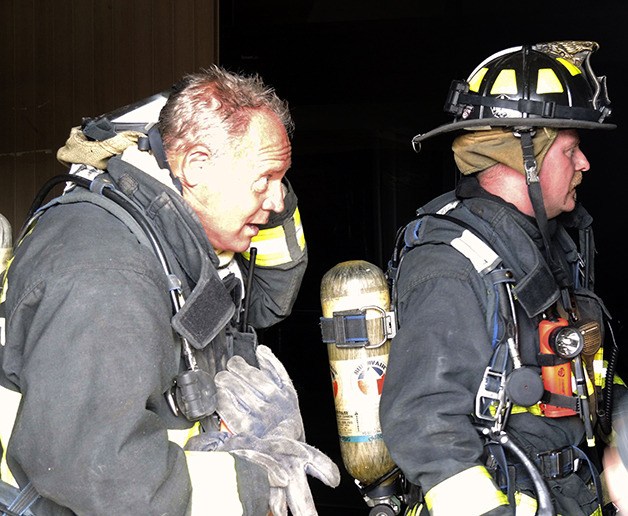Since the end of May, and continuing through the end of June, East Pierce Fire and Rescue has been using the empty Bonney Lake Albertson’s building as a training facility. The carefully planned drills consist of both individual and team exercises, designed to reinforce their training and introduce slightly new safety concepts.
Every firefighter in the district is required to complete each of the drills, which are done during the crews’ regular work hours. Even during training, the on-duty firefighters are responsible for answering 911 calls.
Tools such as thermal imaging cameras and radios were used during training but the firefighters also utilized abstract ideas such as orientation. The drills challenged participants to orient themselves to each other and their exits by using sight, sound and touch.
During individual drills, each firefighter was required to enact a mayday situation in which they were fitted with blacked-out masks, taken to the middle of the building, disoriented and left to use his or her own mental faculties and available tools to get to safety. “Mayday” is a distress signal used by firefighters who are in a life-threatening situation.
One recurring theme through each of the drills was air supply. Firefighters use air tanks to breathe in smoky situations and an alarm goes off when the air tank dips to just 25 percent. In the past, that signal meant it was time to start finding the exit but in all reality, that leaves approximately four minutes to do so — a situation which could turn deadly.
East Pierce Battalion Chief Doug Walker said the new goal is to train each firefighter to recognize how much air they personally use in high-stress situations, so they may find their way out of the danger zone before running out of air. Everyone uses oxygen at a slightly different rate and by more accurately knowing how long they have, their chances of survival are significantly improved, he said.
The training has gone very well so far, said Walker. Among the more detailed goals of each drill, is a very basic concept. They learned it all at the fire academy, but the ability to practice and improve throughout their careers allows them to make mistakes in a safe environment, he said.
While preparing a group of career firefighters for an exercise, Walker told them, “Use the biggest and best tool you’ve got, which is your brain.”



